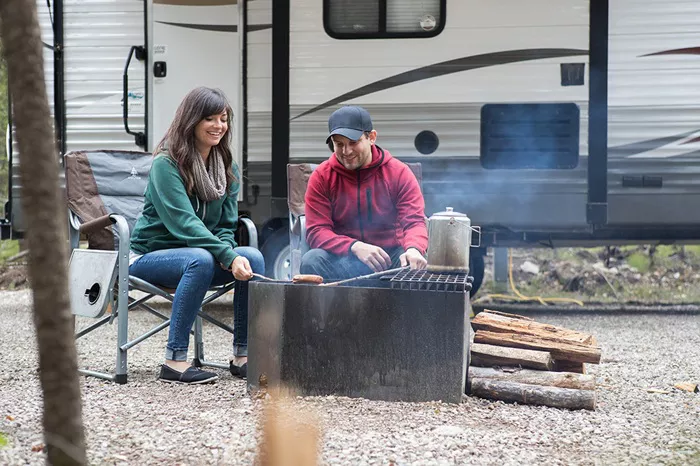Dry camping, also known as boondocking or wild camping, means camping without hookups to water, electricity, or sewer systems. Unlike traditional campground camping, dry camping requires self-sufficiency. You rely on your own resources for power, water, and waste management.
This style of camping is popular among RVers, van lifers, and tent campers who seek solitude and adventure. It allows you to camp in remote areas, away from crowded campsites.
How Does Dry Camping Work?
No Hookups, Just Nature
In dry camping, you don’t have access to:
- Electricity: No power outlets for charging devices or running appliances.
- Water: No direct water supply for drinking, cooking, or cleaning.
- Sewer: No dump stations for wastewater.
Instead, you must bring your own supplies or use alternative methods.
Common Dry Camping Locations
You can dry camp in:
- Public lands (BLM land, national forests)
- Remote wilderness areas
- Parking lots (for short stays, with permission)
- Private properties (with owner approval)
Many national parks and forests allow dispersed camping, meaning you can camp outside designated sites.
Essential Gear for Dry Camping
1. Water Storage and Filtration
Since there’s no running water, you need:
- Large water containers (5-7 gallons per person per day)
- Portable water filters (for natural water sources)
- Water-saving habits (use biodegradable soap, minimize waste)
2. Power Solutions
Without electricity, you must generate your own power. Options include:
- Solar panels (best for long-term camping)
- Portable power stations (like Jackery or Bluetti)
- Deep-cycle batteries (for RVs and vans)
- Generators (gas or propane-powered, but noisy)
3. Waste Management
You must handle your own waste properly:
- Portable toilets (for RVs and vans)
- Wag bags or burying waste (for tent campers, following Leave No Trace principles)
- Gray water disposal (use eco-friendly soap and scatter water away from campsites)
4. Food Storage
Without refrigeration, you need:
- Coolers with ice (for short trips)
- Non-perishable foods (canned goods, dried meals)
- Bear-proof containers (if camping in bear country)
Pros and Cons of Dry Camping
Advantages
Freedom to camp anywhere (no reservation needed)
Cost-effective (often free or very cheap)
Disadvantages
- Limited resources (must conserve water and power)
- Requires planning (must bring all supplies)
Tips for Successful Dry Camping
1. Plan Ahead
- Research camping regulations for your destination.
- Check weather conditions.
- Bring extra supplies in case of emergencies.
2. Conserve Resources
- Use LED lights to save battery power.
- Take “Navy showers” (quick rinses with minimal water).
- Cook simple meals to reduce cleanup.
3. Follow Leave No Trace Principles
- Pack out all trash.
- Avoid damaging plants and wildlife.
- Camp at least 200 feet from water sources.
Is Dry Camping Right for You?
Dry camping is great if you:
- Love solitude and adventure.
- Don’t mind roughing it.
- Enjoy problem-solving and self-reliance.
It’s not ideal if you:
- Prefer comfort and convenience.
- Need constant power and water.
- Don’t like planning ahead.
Conclusion
Dry camping is an exciting way to experience nature without crowds. It teaches resourcefulness and connects you deeply with the outdoors. With the right gear and mindset, anyone can enjoy it.
Are you ready to try dry camping? Pack wisely, respect nature, and enjoy the freedom of off-grid living!
Related topics:
Best Waterproof Canopy for Camping
Best Camping Gadgets: Essential Tools for Outdoor Experience
The Best Rocker Chair for Camping: Comfort and Styl

